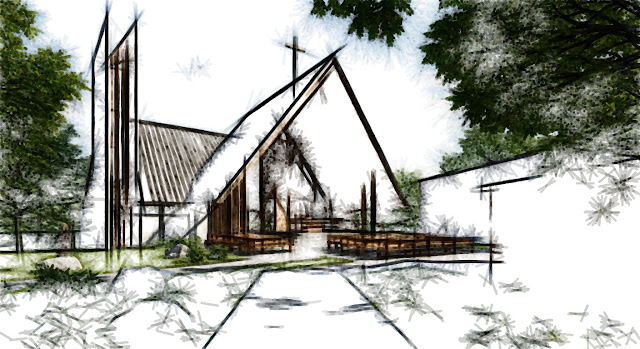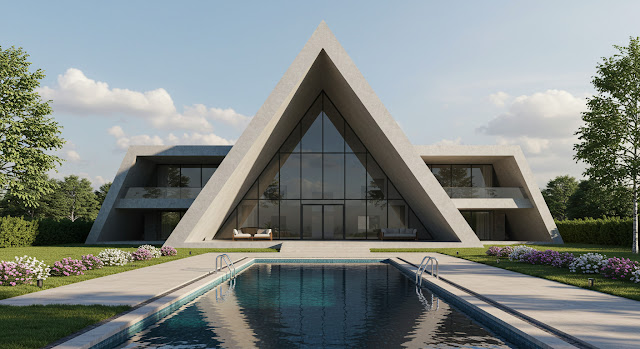Net-Zero Homes: How to Design a House That Pays Its Own Bills
In today’s world, the need for sustainability is more pressing than ever. As climate change accelerates, the demand for energy-efficient solutions in all aspects of life—especially in housing—has surged. One of the most innovative and forward-thinking solutions to this growing concern is the concept of net-zero homes. These homes are designed to produce as much energy as they consume over the course of a year, effectively allowing homeowners to live without worrying about utility bills.
But how exactly does a net-zero home work, and how can you design one that pays its own bills? Let’s explore what goes into creating a house that not only helps the environment but can also provide financial benefits to its owners.
What is a Net-Zero Home?
A net-zero home is a house that generates as much energy as it uses over the course of a year, typically through a combination of energy-efficient design and renewable energy sources like solar panels. This means that the energy consumption and production are balanced out to zero—hence the term “net-zero.” In practical terms, this could involve generating electricity through renewable sources like solar or wind power, implementing high-efficiency insulation and appliances, and using advanced technologies to minimize energy waste.
Net-zero homes don’t just use alternative energy sources; they are built to be energy efficient at every level. This requires a holistic approach to design, construction, and operation, combining various strategies to ensure that the energy consumed is as low as possible while the energy produced is as high as possible.
Key Components of a Net-Zero Home
Building a net-zero home requires careful planning and execution. Below are some of the key components that make up a net-zero home:
1. Energy-Efficient Design
Designing a home for energy efficiency starts with optimizing its shape, orientation, and layout. Properly positioning the house on the lot can help maximize natural heating and cooling from the sun, reducing the need for artificial heating and air conditioning.
-
Orientation and Passive Design: South-facing windows (in the Northern Hemisphere) allow for passive solar heating, while shading and thermal mass can help cool the home in warmer months.
-
Insulation: A well-insulated home minimizes heat loss in winter and prevents heat from entering in the summer. High-quality insulation, air sealing, and the use of energy-efficient windows are essential to achieving a low-energy home.
2. Solar Power (or Other Renewable Energy Sources)
One of the most common ways to achieve net-zero energy status is by installing solar panels on the roof to generate electricity. With the right solar system, a home can generate enough electricity to meet its energy needs over the course of a year.
-
Solar Photovoltaic (PV) Panels: These convert sunlight into electricity, which can be used to power everything from lighting and appliances to heating and cooling systems.
-
Battery Storage Systems: Since solar energy is only generated during the day, having a battery system can store excess electricity for use at night or on cloudy days, helping to maintain energy independence.
In some cases, homeowners may also use wind power or other renewable energy sources in addition to or instead of solar.
3. Energy-Efficient Appliances
Appliances consume a significant amount of energy in a home. Choosing energy-efficient models can reduce energy use without sacrificing functionality.
-
Energy Star Appliances: Energy-efficient appliances, such as refrigerators, washing machines, and dishwashers, are a must for a net-zero home. These appliances are designed to use less energy and water, which reduces the overall energy load.
-
LED Lighting: LED bulbs consume far less energy than incandescent or even compact fluorescent lights. Using them throughout the house significantly cuts electricity costs.
4. Efficient Heating and Cooling Systems
A highly efficient heating, ventilation, and air conditioning (HVAC) system is crucial to maintaining a net-zero home.
-
Heat Pumps: Instead of traditional heating systems, many net-zero homes use heat pumps, which are incredibly efficient because they transfer heat rather than generate it. They can also serve as air conditioners in warmer weather, further improving efficiency.
-
Geothermal Systems: These systems utilize the stable temperature of the earth to heat and cool a home. They can be more expensive to install but offer excellent long-term savings on energy bills.
5. Water Conservation Systems
Water conservation is an important aspect of an energy-efficient home. Conserving water not only reduces utility bills but also helps reduce the energy required to pump, heat, and treat water.
-
Low-Flow Fixtures: Installing low-flow faucets, showerheads, and toilets helps reduce water usage without compromising comfort.
-
Rainwater Harvesting: Capturing rainwater for non-potable uses, such as irrigation or flushing toilets, reduces the strain on municipal water systems and minimizes the need for energy-intensive water processing.
6. Smart Home Technology
Integrating smart technology into a net-zero home can help manage energy use more effectively. Smart thermostats, lighting, and energy management systems can monitor and control energy consumption, making sure that the home is using energy as efficiently as possible.
-
Smart Thermostats: Devices like Nest or Ecobee learn your habits and adjust heating and cooling to your needs, reducing unnecessary energy consumption.
-
Home Energy Management Systems: These systems allow homeowners to track energy production and consumption in real-time and optimize settings for greater efficiency.
How to Design a Net-Zero Home
Designing a net-zero home begins with understanding the local climate, available resources, and your specific needs. Here are some general steps to follow when designing your own net-zero home:
-
Assess Your Energy Needs: Start by calculating how much energy your household typically uses. This will help you determine the scale of solar panels or other renewable energy systems you need to meet your energy demands.
-
Choose the Right Location: If possible, choose a location with plenty of sunlight to maximize solar power generation. The geographic location and the home’s orientation will play a significant role in energy efficiency.
-
Work with Experts: Engage architects, builders, and energy consultants who specialize in sustainable construction. Designing a net-zero home requires a deep understanding of energy-efficient building materials, technologies, and renewable energy systems.
-
Prioritize Energy-Efficiency First: Before adding solar panels or other renewable energy systems, ensure that your home is as energy-efficient as possible. Maximizing insulation, reducing energy waste, and using the most efficient appliances will minimize the energy you need to generate.
-
Incorporate Renewable Energy: After optimizing energy efficiency, install solar panels or wind turbines to generate the renewable energy needed to achieve a net-zero balance.
-
Plan for Long-Term Maintenance: Keep in mind that net-zero homes often require regular maintenance, particularly with renewable energy systems like solar panels. Make sure to plan for these costs and maintenance requirements as part of your long-term budget.
Financial Benefits of Net-Zero Homes
While building a net-zero home can have a higher upfront cost compared to conventional homes, the long-term savings can be substantial. Here are some of the financial benefits:
-
No Utility Bills: Since the home generates its own energy, you won’t have to pay monthly utility bills for electricity, and in some cases, water or heating.
-
Increased Home Value: Net-zero homes often command higher market prices due to their energy efficiency, environmental benefits, and cost savings.
-
Incentives and Tax Breaks: Many governments and utilities offer incentives, rebates, and tax credits to homeowners who build energy-efficient homes or install renewable energy systems. These incentives can help offset the initial investment.
Conclusion
Designing and building a net-zero home is one of the most effective ways to create an energy-efficient living space that can also pay its own bills. By combining energy-efficient design, renewable energy sources, and smart home technology, homeowners can reduce their carbon footprint, save money on utilities, and enjoy long-term financial benefits.
As more people become aware of the environmental and financial advantages of sustainable living, the net-zero home concept is likely to grow in popularity. Whether you’re building a new home or retrofitting an existing one, the move toward net-zero living is a smart investment in both your future and the planet’s.






_1.jpg)
_2.jpg)
_1.jpg)
_2.jpg)
_1.jpg)
_2.jpg)
_1.jpg)
_1.jpg)
_2.jpg)
_1.jpg)
_2.jpg)

















.jpg)






_1.jpg)
_2.jpg)
_1.jpg)
_2.jpg)
_1.jpg)
_2.jpg)
_1.jpg)
_2.jpg)
_1.jpg)
_1.jpg)
_2.jpg)
_1.jpg)
_2.jpg)
_1.jpg)
_2.jpg)
















